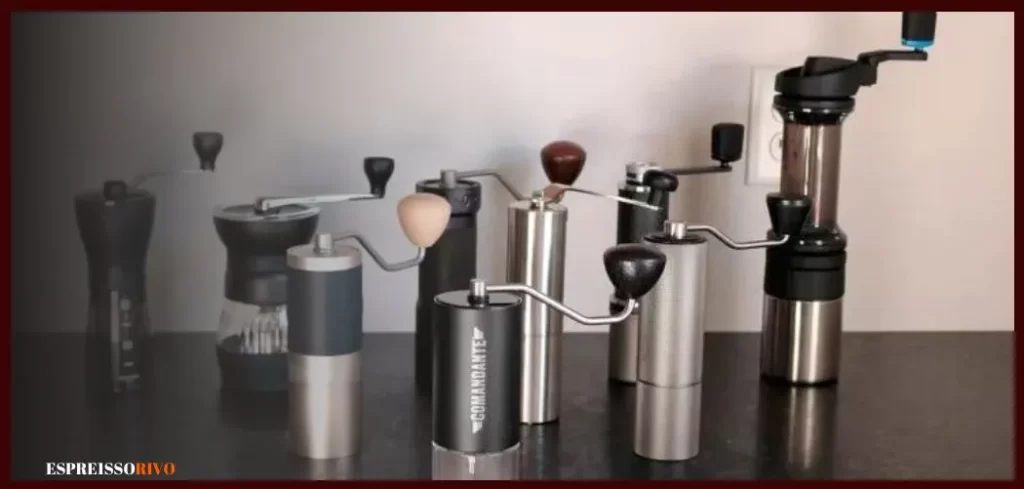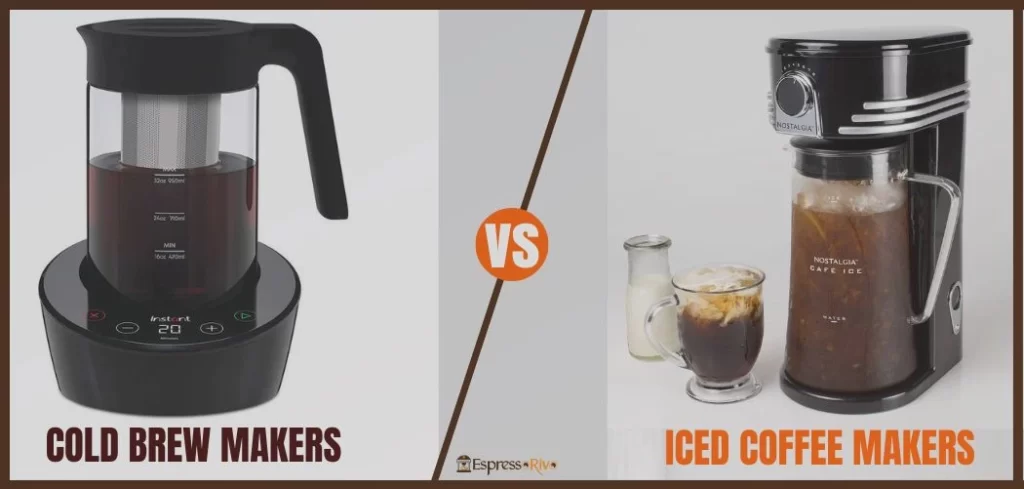Coffee enthusiasts are always on the lookout for new and exciting ways to brew their favorite beverage. While automatic coffee machines have their merits, there’s something undeniably appealing about the manual brewing process. Enter the hand-crank coffee maker – a versatile and portable brewing device that puts you in control of every step, resulting in a cup of coffee that is rich in flavor and satisfaction.
In recent years, hand-crank coffee makers have gained significant popularity among coffee aficionados. These little marvels offer a unique brewing experience that combines simplicity, convenience, and the ability to craft a perfect cup of coffee anywhere, anytime. Whether you’re a seasoned traveler, a camping enthusiast, or simply someone who appreciates the art of manual brewing, a hand-crank coffee maker deserves a place in your coffee arsenal.
What sets hand-crank coffee makers apart is their ability to deliver exceptional results without the need for electricity or complicated machinery. With their user-friendly design and straightforward operation, they allow you to take control of the brewing process, ensuring that every sip is tailored to your taste preferences.
When using a hand-crank coffee maker, you have the freedom to adjust various factors that influence the final cup of joe, such as the grind size, water temperature, and brewing time. This level of customization allows you to experiment and find the perfect balance of flavors, resulting in a truly personalized coffee experience.
In this comprehensive guide, we will walk you through the step-by-step process of using a hand-crank coffee maker. From selecting the right coffee beans and grinding them to perfection, to mastering the art of cranking and brewing, we’ll cover everything you need to know to unlock the full potential of your hand-crank coffee maker.
Understanding Hand-Crank Coffee Makers
If you’re a coffee lover who values the art of manual brewing, then a hand-crank coffee maker is a must-have tool in your coffee repertoire. These clever devices combine simplicity with the ability to produce a delicious cup of coffee, all without the need for electricity or complex machinery.
Hand-crank coffee makers come in various designs, but they all share the same basic principle: the power of your own hand. They typically consist of a cylindrical body, a brewing chamber, and a handle with a crank mechanism. This ingenious design allows you to control the entire brewing process by manually rotating the handle, giving you a hands-on experience from start to finish.
One of the primary advantages of using a hand-crank coffee maker is its portability. Whether you’re embarking on a camping trip, setting up a makeshift office in a new city, or simply enjoying the great outdoors, these compact devices can easily accompany you on your adventures. With a hand-crank coffee maker, you can indulge in your favorite brew wherever you go, without compromising on flavor or quality.
Another benefit of hand-crank coffee makers is the level of control they offer over the brewing variables. You have the freedom to choose your coffee beans, grind them to your preferred consistency, and adjust the brewing time and intensity. This level of customization allows you to tailor your coffee to your exact taste preferences, resulting in a truly personalized and satisfying cup every time.
Hand-crank coffee makers also allow you to appreciate the process of brewing coffee on a deeper level. As you turn the crank and witness the transformation of water and coffee grounds into a fragrant elixir, you’ll feel a sense of connection and involvement that is often absent in automated machines. It’s a truly hands-on experience that coffee enthusiasts find both rewarding and meditative.
Preparing for Brewing
Before embarking on your hand-crank coffee brewing journey, it’s essential to make the necessary preparations to ensure a delightful and flavorful cup of coffee. From selecting the right coffee beans to heating the water to the optimal temperature, each step contributes to the overall brewing experience. So, let’s dive into the pre-brewing preparations and set the stage for a remarkable coffee adventure.
Gather the necessary equipment and ingredients
To kickstart your hand-crank coffee brewing, gather all the essential equipment and ingredients you’ll need for the process. Here’s a checklist to get you started:
- Hand-crank coffee maker: Select a model that suits your preferences and brewing needs. Consider factors such as size, material, and ease of use.
- Fresh coffee beans: Choose high-quality coffee beans that align with your flavor preferences. Opt for beans that are roasted within the past two to four weeks to ensure optimal freshness and flavor.
- Coffee grinder: Invest in a reliable grinder to freshly grind your coffee beans before brewing. Burr grinders are highly recommended for achieving consistent grind size.
- Filter: Check if your hand-crank coffee maker requires specific filters. Choose either reusable metal filters or disposable paper filters, depending on your personal preference and environmental concerns.
- Filtered water: Quality water is crucial for a delicious cup of coffee. Use filtered water to remove any impurities that could negatively impact the taste.
Selecting and grinding the coffee beans
The choice of coffee beans and the grind size significantly influence the flavors and aromas in your cup of coffee. Here are a few tips to consider:
- Coffee bean selection: Experiment with different coffee origins, such as Ethiopian, Colombian, or Brazilian, to discover the flavors you enjoy the most. Consider factors like roast level, flavor profiles, and acidity to guide your selection.
- Grinding the beans: To unlock the full potential of your coffee beans, grind them just before brewing. Adjust the grind size based on your brewing method; for hand-crank coffee makers, a medium-fine grind is usually recommended. Remember to keep the grind consistent for even extraction.
Heating water to the correct temperature
Water temperature plays a crucial role in extracting the desired flavors from your coffee grounds. Follow these guidelines for optimal brewing temperature:
- Ideal temperature: Aim for water temperature between 195°F and 205°F (90°C and 96°C) for most coffee beans. This range ensures proper extraction while preserving the delicate flavors.
- Boiling water: If you don’t have a thermometer, bring the water to a boil and allow it to sit for approximately 30 seconds before pouring it into the coffee maker. This brief rest period helps bring the water temperature down to the desired range.
Carefully selecting your equipment, choosing high-quality beans, grinding them fresh, and heating the water to the ideal temperature, you set the foundation for a memorable coffee brewing experience. These pre-brewing preparations ensure that you’re starting with the best possible ingredients, setting the stage for an exceptional cup of hand-crank brewed coffee.
Step-by-Step Guide to Using a Hand-Crank Coffee Maker
Now that you’ve prepared all the necessary elements for brewing, it’s time to dive into the step-by-step process of using a hand-crank coffee maker. Follow these instructions closely to ensure a delicious and satisfying cup of coffee.
Setting up the coffee maker
- Assemble the coffee maker: Start by attaching the brewing chamber to the main body of the hand-crank coffee maker according to the manufacturer’s instructions. Ensure all components are securely connected for a stable brewing experience.
- Clean the coffee maker: Before your first use and after each brewing session, thoroughly clean the coffee maker to remove any residue or oils. Refer to the manufacturer’s guidelines for proper cleaning instructions. A clean coffee maker ensures optimal flavors and extends the lifespan of the device.
Measuring and adding coffee grounds
- Determine the coffee-to-water ratio: Depending on your taste preferences, start with a coffee-to-water ratio of 1:15 or 1:16. For example, if you’re using 20 grams of coffee, you’ll need approximately 300-320 milliliters (10-11 ounces) of water.
- Grind the coffee beans: Using your preferred grinder, grind the coffee beans to a medium-fine consistency. The grind should be similar to granulated sugar or beach sand. Consistency is key to ensure even extraction.
- Add the coffee grounds: Open the brewing chamber of the coffee maker and pour in the freshly ground coffee. Use a spoon or your hand to level the coffee bed for an even extraction.
Heating water and pouring it into the coffee maker
- Heat the water: If you haven’t already, bring the filtered water to the recommended temperature range of 195°F to 205°F (90°C to 96°C). You can use a thermometer or follow the boiling water method mentioned earlier.
- Pour the water: Slowly and steadily pour the hot water over the coffee grounds in a circular motion, starting from the center and moving outward. Take care not to overfill the brewing chamber.
Brewing the coffee
- Start cranking: Securely hold the coffee maker with one hand and use the other hand to rotate the crank handle in a steady and consistent manner. The rotation should be smooth and not too fast or too slow. Aim for approximately 1 to 2 revolutions per second.
- Monitor the brewing time: The optimal brewing time will depend on factors like grind size and personal preference. As a general guideline, aim for a brewing time of around 3 to 4 minutes. You can adjust this duration based on the desired strength of your coffee.
Filtering and serving the coffee
- Complete the brewing process: Once the desired brewing time has elapsed, stop cranking and allow the coffee grounds to settle at the bottom of the brewing chamber.
- Filter the coffee: Open the coffee maker and remove the brewing chamber. Place a filter (either paper or reusable) over your serving vessel and pour the brewed coffee through it. The filter will trap the coffee grounds, resulting in a clean cup of coffee.
- Serve and enjoy: Pour the freshly brewed coffee into your favorite mug or cup. Take a moment to appreciate the enticing aromas before savoring each sip of your hand-crank brewed creation.
Congratulations! You’ve successfully brewed a delicious cup of coffee using your hand-crank coffee maker. Remember to clean the coffee maker and enjoy the moment of pure coffee bliss.
Tips and Troubleshooting
Using a hand-crank coffee maker opens up a world of possibilities for crafting your perfect cup of coffee. To enhance your brewing experience and troubleshoot any potential issues, consider the following tips and tricks:

- Experiment with coffee bean varieties: Don’t be afraid to explore different coffee bean origins and roasts to find your preferred flavor profiles. Each coffee bean offers a unique taste experience, so try single-origin beans or blends to discover your favorites.
- Adjust the grind size: If your coffee tastes weak or watery, try grinding the beans slightly finer to increase the extraction. On the other hand, if the coffee is too bitter or over-extracted, opt for a coarser grind size. Small adjustments can make a big difference in the flavor of your brew.
- Maintain consistency in your cranking speed: Keep a steady and consistent cranking speed throughout the brewing process. Too fast or too slow rotation can affect the extraction and result in an imbalanced cup of coffee.
- Control the water temperature: Experiment with slightly higher or lower water temperatures to find the sweet spot that brings out the flavors you enjoy. Keep in mind that brewing at higher temperatures may lead to more extraction and potentially result in a stronger and bolder cup of coffee.
- Clean the coffee maker regularly: Regular cleaning is essential to prevent the buildup of coffee residue, oils, and stale flavors. Follow the manufacturer’s guidelines for cleaning and descaling your hand-crank coffee maker. A clean machine ensures the purity of your brew and extends the lifespan of the device.
- Practice patience: Brewing coffee with a hand-crank coffee maker requires a bit of time and effort, but the results are well worth it. Embrace the process and take your time to enjoy the experience. The act of brewing itself can be therapeutic and rewarding.
- Customize your brewing method: While we’ve provided a general step-by-step guide, don’t hesitate to adjust the process based on your preferences. Experiment with different brewing times, water-to-coffee ratios, and even water pouring techniques to create a cup of coffee that perfectly suits your taste buds.
- Store your coffee beans properly: To maintain the freshness and quality of your coffee beans, store them in an airtight container away from direct sunlight, heat, and moisture. Avoid storing them in the refrigerator or freezer, as exposure to varying temperatures can affect the flavor.
- Enjoy the journey: Brewing coffee with a hand-crank coffee maker is an art and a delightful journey of exploration. Embrace the opportunity to learn, experiment, and fine-tune your brewing skills. With each cup, you’ll enhance your understanding of flavors and develop your own signature brewing style.
Conclusion
Congratulations on mastering the art of using a hand-crank coffee maker! By following this step-by-step guide, you’ve embarked on a journey that allows you to brew exceptional coffee with precision and care. The rich aromas, flavors, and satisfaction that come from a cup of hand-crank brewed coffee are truly unparalleled.
Throughout this article, we’ve explored the ins and outs of hand-crank coffee makers, from understanding their mechanics to preparing for brewing and executing the brewing process itself. We’ve covered important aspects such as equipment selection, coffee bean grinding, water temperature, and troubleshooting tips to help you navigate any challenges along the way.
Brewing coffee with a hand-crank coffee maker is an art form that requires practice and patience. Embrace the opportunity to experiment with different coffee bean varieties, grind sizes, and brewing techniques. Each cup you brew is a chance to refine your skills and discover your personal preferences.
As you continue your coffee journey, don’t forget to savor the experience. Brewing coffee by hand allows you to connect with each step of the process, from grinding the beans to cranking the handle and finally pouring that aromatic elixir into your cup. Take a moment to inhale the enticing aromas and appreciate the flavors that unfold with each sip.
Whether you’re a coffee aficionado seeking a new brewing method or a curious coffee lover exploring the world of specialty coffee, the hand-crank coffee maker opens up a world of possibilities. Enjoy the journey, experiment with different techniques, and share your newfound knowledge with fellow coffee enthusiasts.
We hope this comprehensive guide has provided you with the knowledge and inspiration to embark on your hand-crank coffee brewing adventures. Remember to adjust the process to suit your taste preferences, as brewing coffee is a highly personal and customizable experience.
Ronsil
Meet Ronsil, the master barista behind EspressoRivo. With years of experience in the coffee industry, he brings a wealth of knowledge and passion to the table. As the owner of a successful coffee shop, Ronsil is a sought-after adviser in the field. His expertise and love for the craft shines through in every cup he serves. We are honored to have him as part of our team at EspressoRivo






